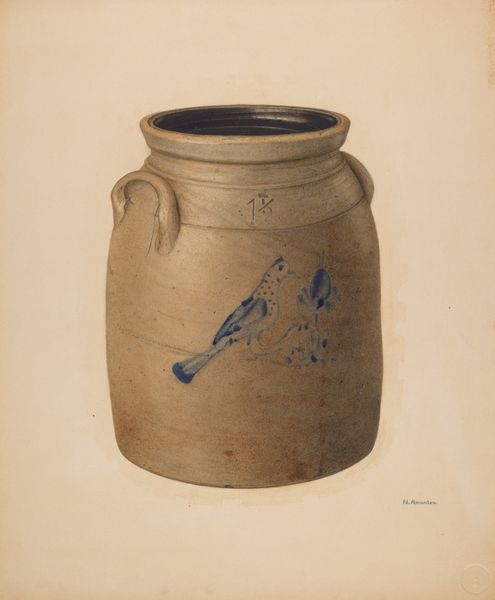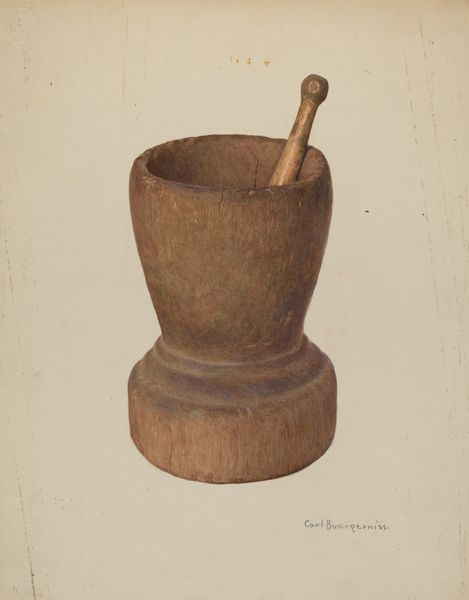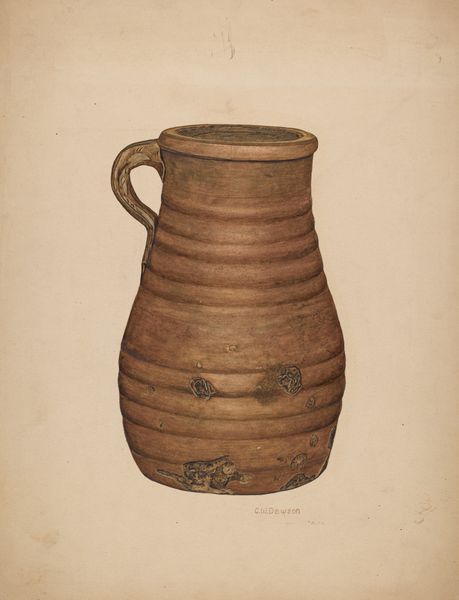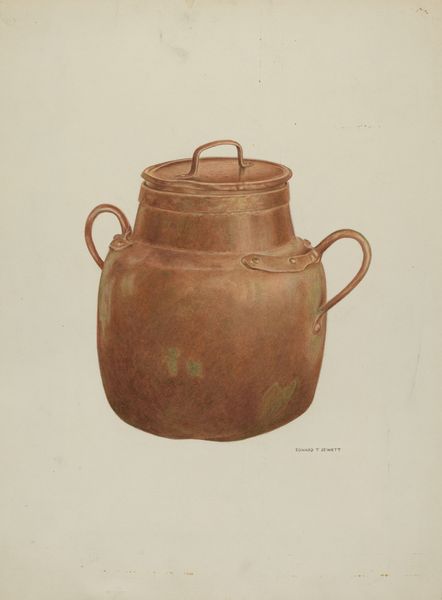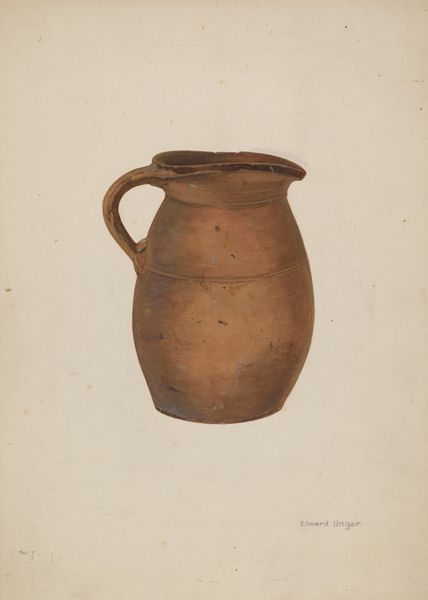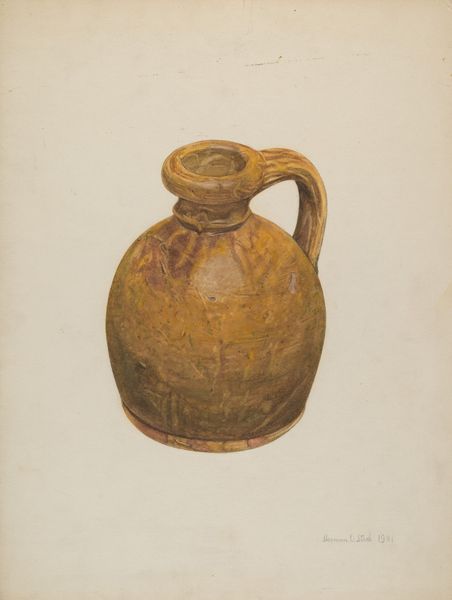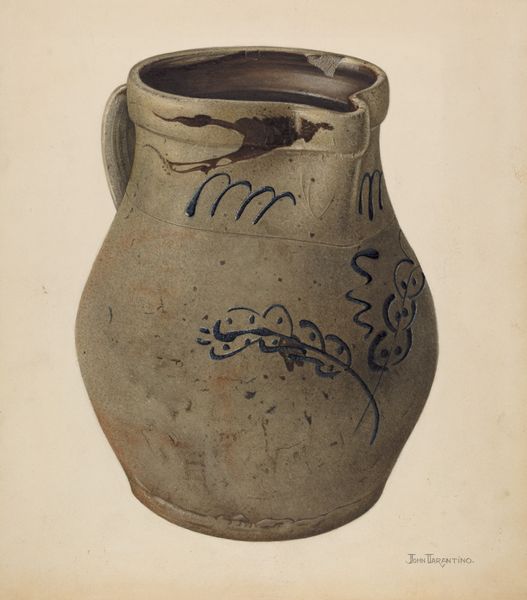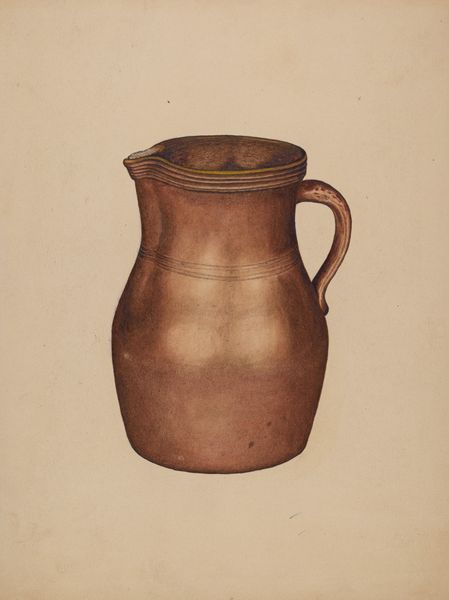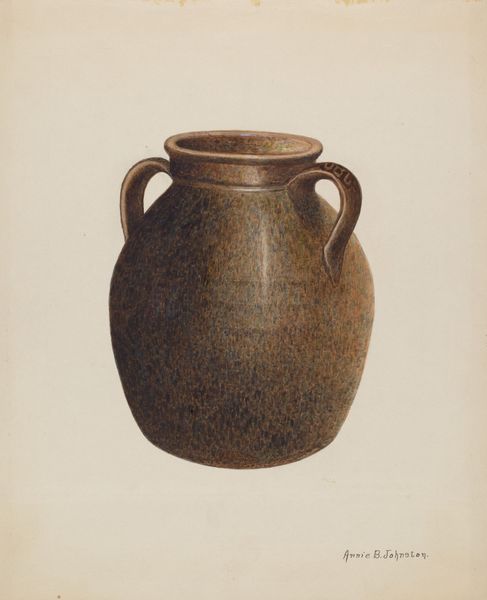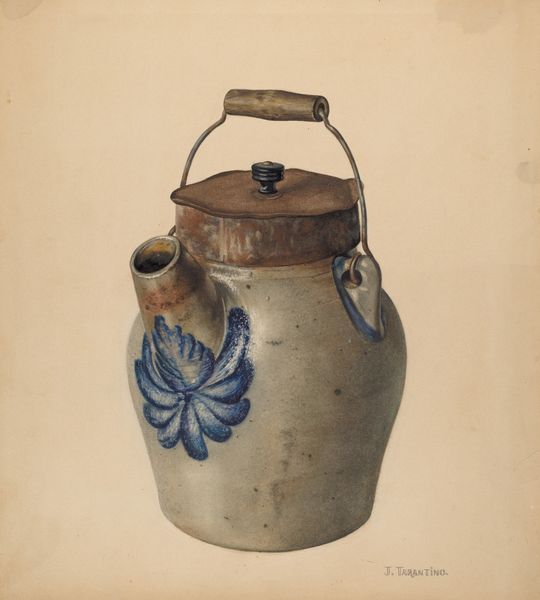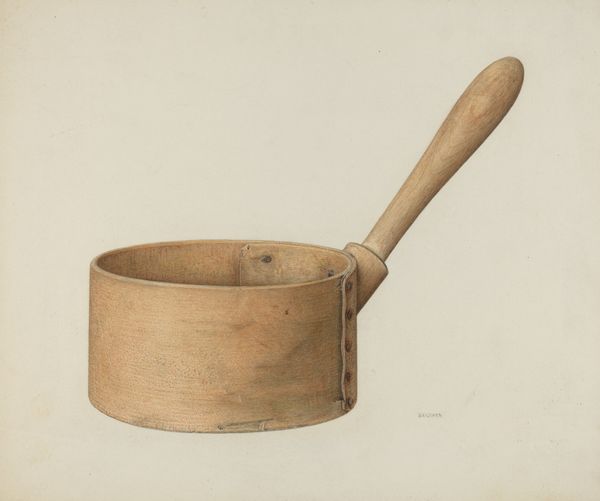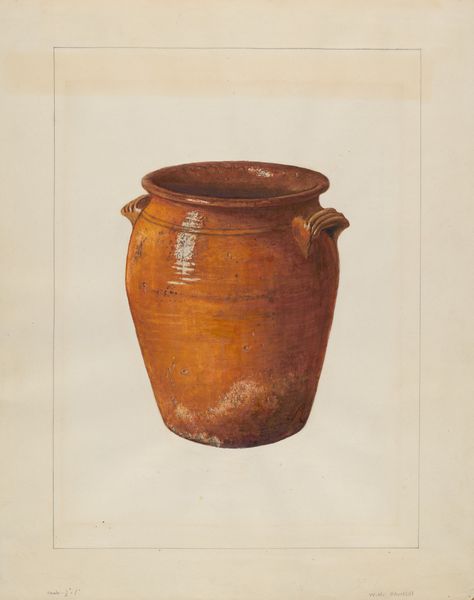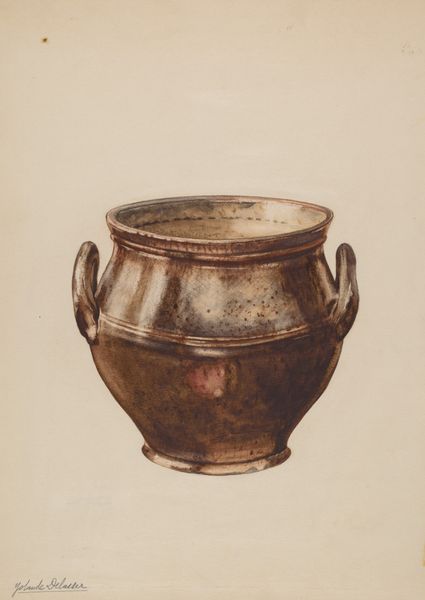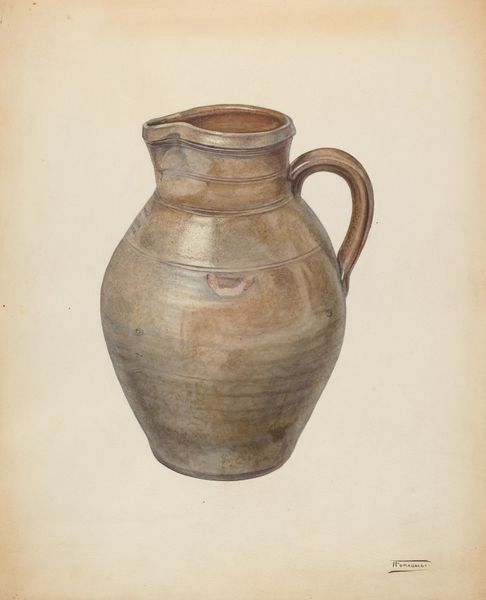
drawing
#
drawing
#
toned paper
#
charcoal drawing
#
possibly oil pastel
#
oil painting
#
coloured pencil
#
coffee painting
#
underpainting
#
animal drawing portrait
#
watercolour illustration
#
watercolor
Dimensions: overall: 45.8 x 35.7 cm (18 1/16 x 14 1/16 in.) Original IAD Object: Jug: 8 3/4"High, 5"Dia.(top), 6 1/2" Dia.(bot), 7 1/2" Dia.(waist); Paddle: 15 7/8" long(handle), 2"x3 1/2" (paddle), handle tapers from 7/8" to 1/4".
Copyright: National Gallery of Art: CC0 1.0
Editor: So, this is "Batter Jug with Paddle" by Richard Donovan, created around 1940. It looks like it's a drawing, maybe using watercolors and colored pencil. It strikes me as a very humble still life, quite earthy in its tones. What catches your eye about this piece? Curator: Well, let's start with the objects themselves. We see a batter jug and a paddle – utilitarian objects, tools for food preparation. The materiality is key. Donovan isn't depicting luxury goods. He's highlighting the everyday, perhaps celebrating the process of making. What were such tools used for and how did they factor into labor within the domestic sphere? Editor: That makes me think about the production of the image itself. Was this quickly sketched or meticulously rendered? I’m curious how long it would take someone to create it. Curator: Good question! Notice the toned paper and varied media. This drawing itself is labor. Is Donovan elevating these common objects through careful artistic rendering or simply documenting them? And what is the value, then, of a carefully crafted image of commonplace, possibly mass-produced objects? How might this relate to craft traditions versus industrial manufacturing practices emerging at this time? Editor: I see what you mean. The image and the depicted objects both carry the weight of production. This gives it a different context than a more conventional still life. Curator: Exactly! Consider also who likely used such a batter jug. What does this work say, indirectly, about gendered labor and domestic spaces in the 1940s? Does it critique or romanticize those contexts? Editor: I hadn’t thought about it that way. Seeing it as more than just an arrangement of objects really opens it up. Curator: By focusing on materials and their associated social contexts, we see how even the simplest images can reflect complex relationships between labor, class, and culture. I have really loved seeing how the artist worked with simple items. Editor: That makes me see "still life" paintings with new eyes, too. Thanks for that insightful chat!
Comments
No comments
Be the first to comment and join the conversation on the ultimate creative platform.
